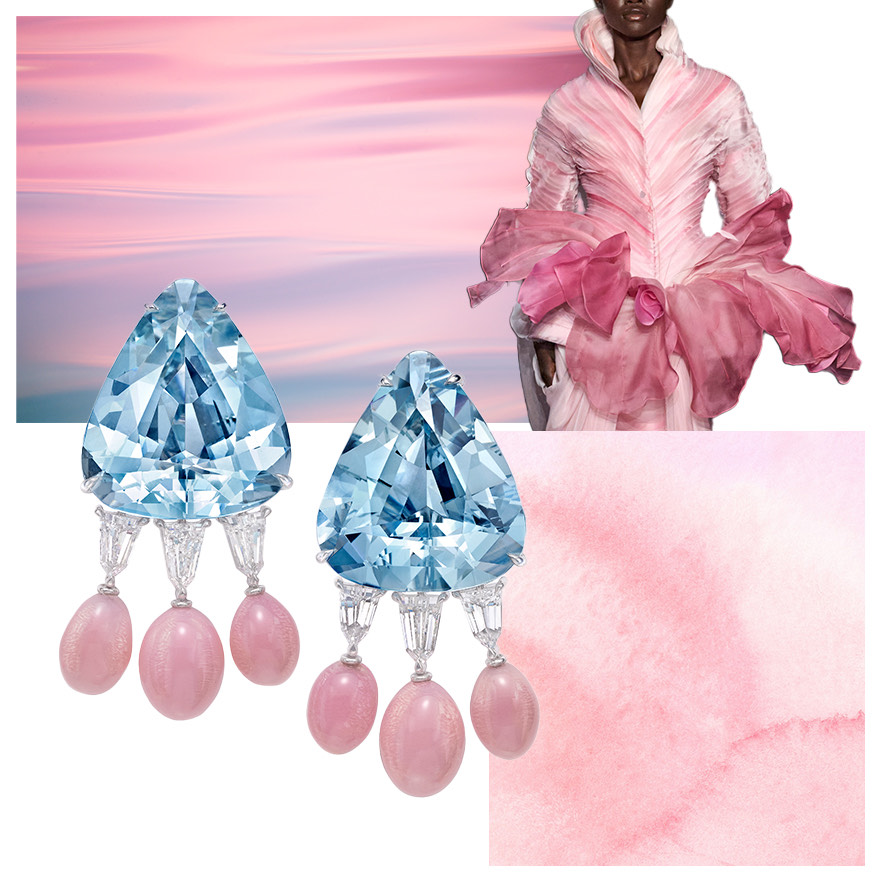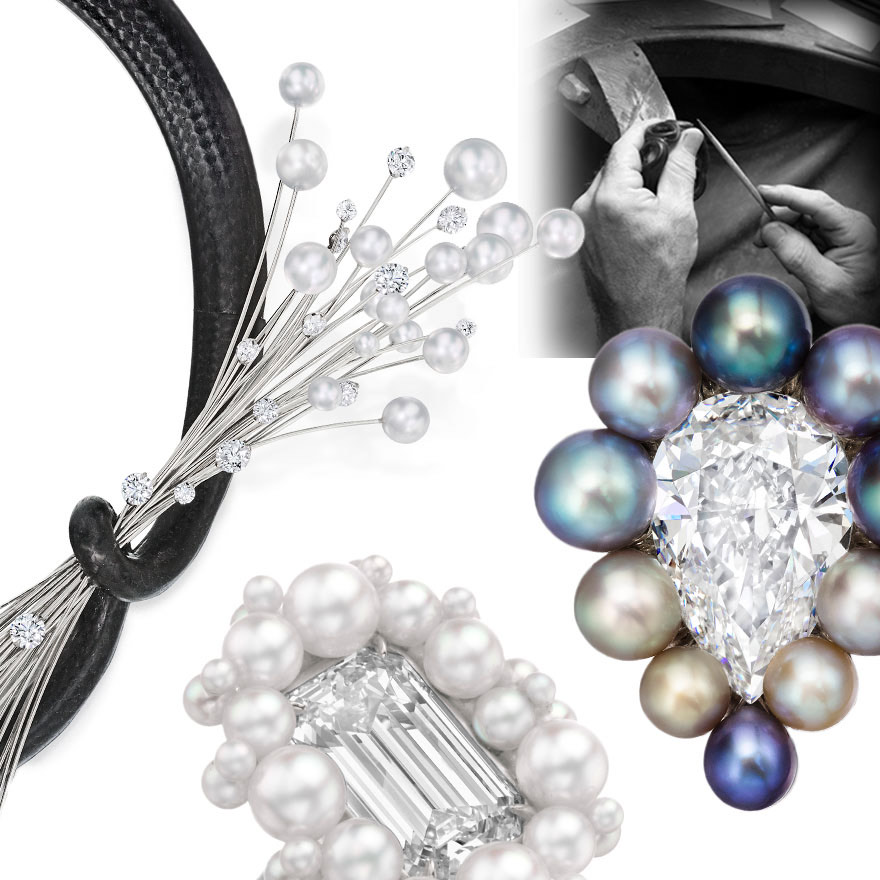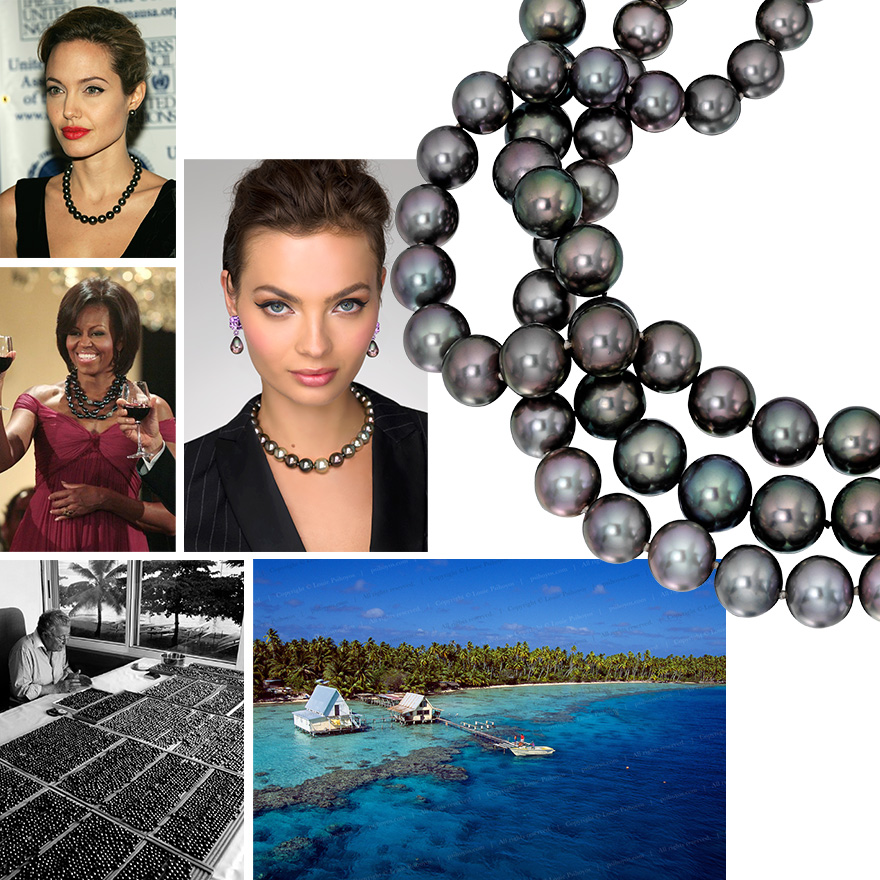
A Brief History of Tahitian Pearls
The beautiful and exotic Tahitian Pearl has a relatively short history. Not that oysters were not naturally producing a few rare dark pearls, but the oyster producing them, the Pinctada Margaritfera, was originally more prized for its unique colors of mother-of-pearl, that glistening substance lining the shell of the oyster. The Tahitian Pearl as we know it today would not become internationally recognized until the 1970s, thanks in large part to the efforts of one passionate pearl pioneer–Salvador J. Assael, founder of Assael.
Colorful Mother-of-Pearl
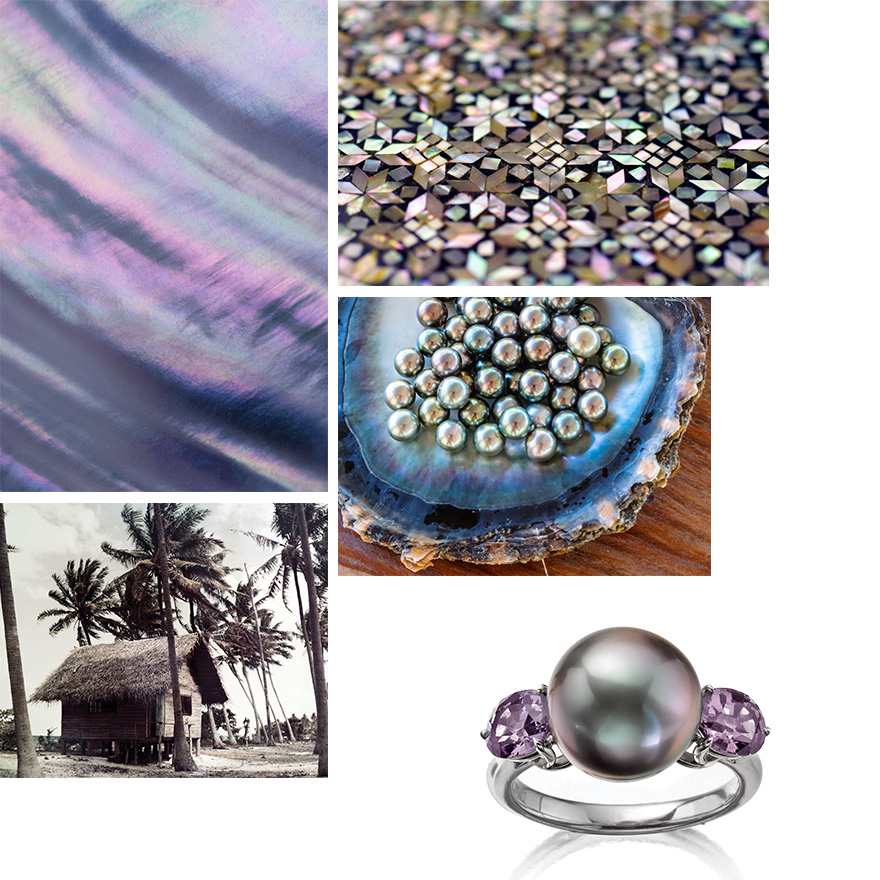
Clockwise from Upper Right – Colorful Mother of Pearl Buttons, Tahitian Pearls, Assael Tahitian Pearl and Spinel Ring, Hut on Marutea island purchased by Salvador Assael when he started pearl farming in Tahiti
European explorers had discovered the atolls of Polynesia in the Pacific Ocean in the 16th and 17th centuries, with historic sightings noted by explorers like Ferdinand Magellan. Both the British and French claimed the islands in the 18th century, and eventually, the French colonized the islands in 1880. The country of French Polynesia was officially established in 1957. Those early traders and explorers created international demand for the colorful shimmer of the Tahitian oysters’ Mother-of-Pearl.
The black-lip Pinctada Margaritifera oyster naturally produces Mother-of-Pearl in a range of rainbow hues from iridescent greens, purples, and pinks to charcoal grays and blacks. The flat round oyster shells proved easy to transport, and travelers would gather huge quantities of the oysters to take back to Europe. The exotic colors and natural beauty began inspiring international markets. In the 1950s, the oysters were harvested almost to the point of extinction to fulfill demand for artistic creation, such as buttons for ready-to-wear clothing and inlay for furniture and decorative objects.
To protect the waning resource of this genus of oyster, locals began investing in pearl farming in the 1960s. Pearl expertise was lacking, however, and the techniques were fairly crude. The few black pearls that were harvested were not particularly desirable, and demand for coconut oil surfaced as a new alternative revenue stream. This encouraged locals to raise the threatened oysters, as opposed to harvesting them. Not until the 1970s did pearl farming became a major enterprise in the pristine waters around Tahiti.
Enter Salvador Assael.
The Gem Quality Tahitian Pearl

Clockwise from Upper Left – Salvador Assael, Assael Tahitian Pearl Strand, Harry Winston 5th Ave, Harry Winston himself, Assael South Sea Pearl Strand, French Polynesia
While vacationing in St. Tropez in the summer of 1973, Salvador Assael’s yacht happened to dock beside that of Frenchman Jean-Claude Brouillet. When the two met, Brouillet had recently moved to the atoll of Marutea in Tahiti. Learning of Assael’s expertise as a South Sea Pearl supplier, Brouillet asked him to share some local black pearls from Tahiti with his high-end jewelry clientele. The quality of those initial pearls was quite poor, but the forward-thinking, swashbuckling adventurer in Salvador Assael recognized a good opportunity when he saw it.
Salvador partnered with Brouillet to purchase the atoll and start multiple pearl farms. Knowing he needed the absolute best talent for the highly challenging work of pearl cultivation, Salvador personally brought in Japanese pearl experts, offering them double their salaries back home. Under his guidance and facilitation, the farms succeeded in producing an exemplary collection of superior quality Tahitian Pearls.
In 1978, when he had enough gem pearls for a perfect necklace, Salvador took the strand of newly cultivated pearls to his friend Harry Winston on Fifth Avenue in New York and challenged him to sell it. Winston was instantly smitten, putting the necklace in his most important front window on Fifth Avenue. That first-ever strand of natural color black Tahitian Gem Pearls sold within a week! Assael then gave Winston access to the rest of that first harvest, all of which sold quickly.
The exceptional reception of the Tahitian Pearls inspired Salvador to launch a well-executed media blitz exclaiming “A New Gem is Born!” Other Fifth Avenue jewelers joined in as Assael extended the network to include famed brands like Van Cleef & Arpels, Cartier, and Tiffany & Co. The extraordinary beauty of the Assael Tahitian Pearls, their limited supply, and the success of the marketing campaign quickly propelled Tahitian Pearls to a similar exclusive luxury status as that of South Sea Pearls. Not only was a new gem born, but Salvador Assael elevated it to become a gem among gems of the luxury market!
Tahitian Pearl Recognized as a Unique Gem
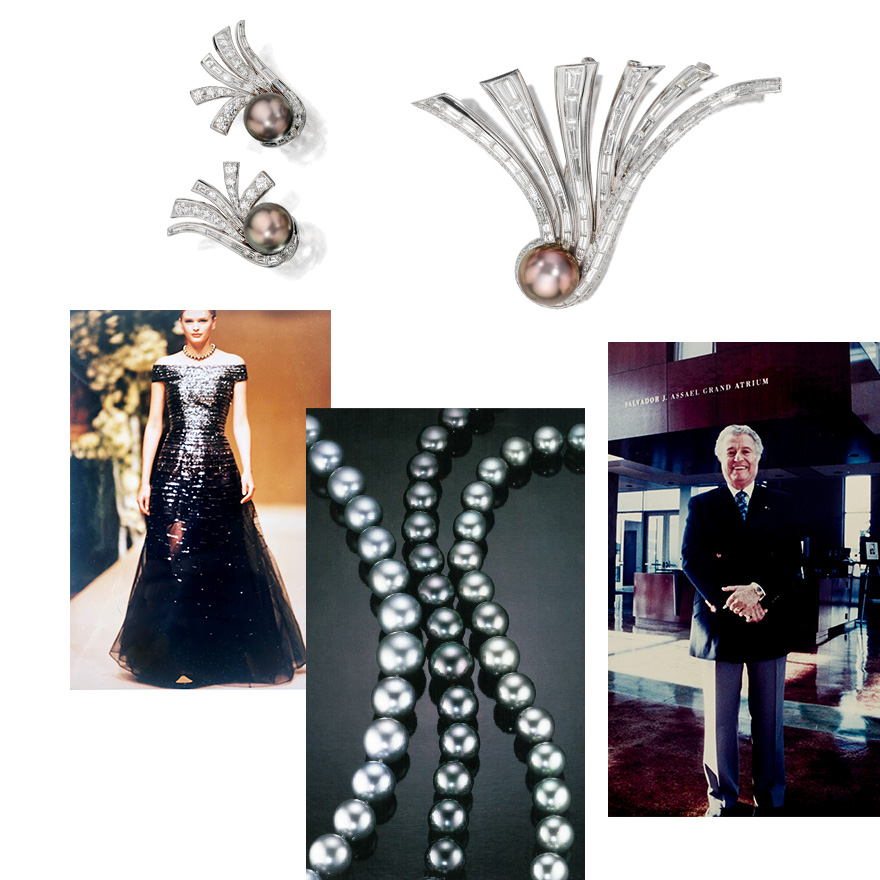
Clockwise from Upper Left – Assael Classic Tahitian Pearl and Diamond ‘FanFare’ Brooch and Earrings, Salvador J. Assael standing in front of the GIA Atrium named in his honor, various shades of Assael Tahitian Pearl Strands, Assael Pearls on the Balmain Paris runway
Assael’s marketing savvy and the buzz he was able to create with the Tahitian Pearl marketing campaign prompted the press to crown Salvador Assael as the “Pearl King.” Martin Coeroli, the former President of Perles de Tahiti, recalls “one of Salvador’s biggest accomplishments was to obtain in 1976 the official recognition of the distinction of the Tahitian pearl as a natural, unique gem by the Gemological Institute of America (GIA).” Salvador had lobbied the GIA for several years to recognize the pearl as a gem, along with diamonds and colored stones. He succeeded. Wisely focusing on the natural color of his new Tahitian Pearls, Salvador then offered GIA certificates with the pearls as color pedigree and proof that his Tahitian Pearls were not color treated in any way. In 1997, when the GIA built its new headquarters and campus in Carlsbad, CA, the Salvador J. Assael Grand Atrium was opened in tribute to his contribution to the fine jewelry industry, as well as his longtime support of the GIA.
According to Coeroli, “Salvador Assael was at the origin of Tahitian pearl success worldwide, by creating the market and then setting up its image as the ultimate luxury product.”
Captions for feature image at top, Clockwise from Upper Left – Angeline Jolie, Model wearing Assael Tahitian Pearl jewelry, Town & Country Award Winning Multi-Color Tahitian Pearl Strands by Assael, Tahiti, Salvador Assael sorting through earlyl Tahitian Pearl harvests, Michelle Obama
If you enjoyed this, you might also like:
Award Winning Tahitian Pearls : 3 Ways to Celebrate New Year New You
Everything You Need to Know About Assael’s Museum-Worthy Tahitian Pearls
Pearls in Portraits – The Epitome of Sophistication for Thousands of Years
La Peregrina – The History and Allure of the Pear Shaped Pearl
Posted on Jan 20, 2021 in History, Pearl Education by Duvall O'Steen
Articles you may also enjoy
Join our Mailing List
Join us for magnificent pearl trends and exclusive treasures. Discover a world that is truly ... beyond rare.

Feeling inspired?
Consider this your invitation to the House of Assael. Find your closest luxury jeweler using our map search and start your journey to timeless elegance.


